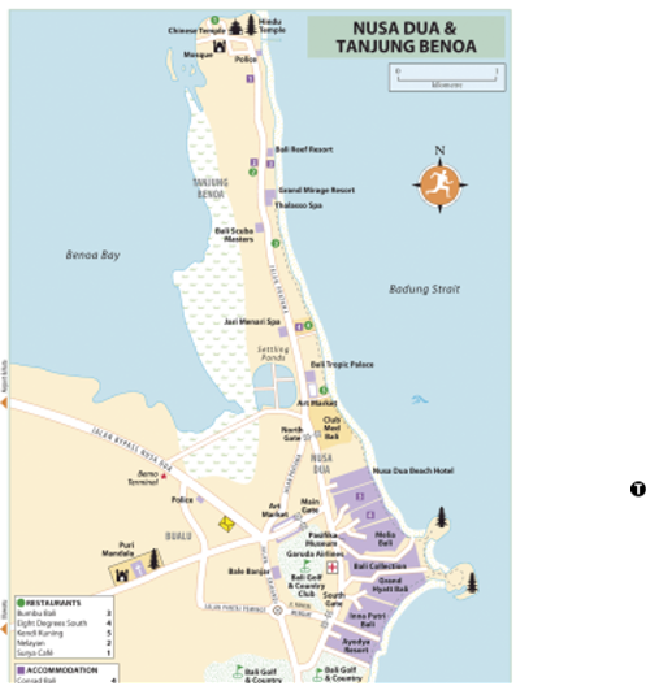Travel Reference
In-Depth Information
Nusa Dua and Tanjung Benoa
Bali's most carefully designed high-end beach resort luxuriates along a coastal stretch of re-
claimed mangrove swamp some 14km southeast of Kuta. A manicured, gated enclave,
NUSA
DUA
was purpose-built to indulge upmarket tourists while simultaneously protecting local
communities from the
impact of mass tourism
. Though it has succeeded, it feels fairly soul-
less after the colour of genuine island life; sort of like Bali for people who don't really want
to be there.
Real life of a sort resumes north of Nusa Dua on the narrow sand bar known as
Tanjung
Benoa
, though this, too, is a strip of yet more swanky hotels, tourist restaurants, shops and
watersports facilities. Continue on to the very top of the peninsula, however, and village life
returns in areas that can be fun to explore, if only to remind you that you are still in Bali.
The beach
What draws most visitors to Nusa Dua is the
beach
: a long ribbon of mostly pale gold sand,
though a reef is exposed at low tide. Halfway down the shoreline, the land blossoms out into
two little clumps, or “islands” (Nusa Dua means “Two Islands”), with a temple standing on
each one.
Pasifika: Museum Pacific Asia
Complex Bali Tourism Development Corporation (BTDC) Area Block P • Daily 10am-6pm • Rp70,000 •
0361 774935,
museum-pasifika.com
To venture beyond Nusa Dua's beach, you could pay a visit to
Pasifika: Museum Pacific
Asia
, north across the access road from the Bali Collection, which houses a wide-ranging and
reasonably interesting display of art and artefacts from Asia and the Pacific, including a de-
cent gallery of Balinese paintings (although anyone with an interest in Balinese art is better
off in Ubud). Otherwise, there's little else to Nusa Dua: no
banjar
, noodle stalls or markets.


